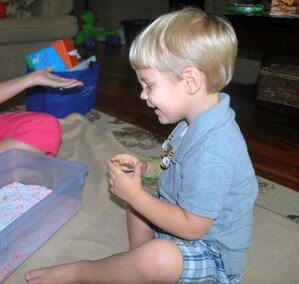
Lots of parents have concerns about their children’s speech and language development and deciding if you have a late talker or a child with a true speech and language issue is sometimes difficult to sort through. While giving your child time to develop
or even while waiting on a referral to go through the proper channels, you might try these tips! A very important step to children learning to talk is learning to imitate! Help your child learn to talk by helping them learn to:
Imitate Actions:
As your toddler learns to imitate actions with objects they enjoy doing what you are able to do and build confidence. Encourage them to push a car, pat the animal in a textured book or tickle the baby’s tummy. Not only are you subtly teaching animals and body parts, you are teaching young children to learn how to play. Using a baby or stuffed animal to imitate hugging or feeding, is very valuable to the process of eventually getting them to another stage of imitation.
Imitate Body Movements:
Encourage them to imitate body movements. Model clapping your hands after they have done something for the first time. Take their hands and help them clap too! As you are cooking or getting ready, play the knock, knock game. Show them how to knock on the door. Say, “Knock! Knock! Who’s there?” Maybe hide a favorite toy behind the pantry or closet door for them to find. Offer toys that they can pound a ball or peg. Sing songs like “If you’re happy and you know it” so they can clap, stomp and do a cheering hand motion.
Imitating Gestures:
All of the imitation is ultimately designed to lead them to communicate with others in a purposeful manner. Imitating a gesture could be something simple like waving, blowing a kiss, nodding yes or no. All of these gestures are forms of communication! They communicate, “hello” or “goodbye,” “I care for you.” or “I do want that!” or “I don’t want that!” Gestures can be even more purposeful if you teach specific baby signs like: more, all done, milk or cracker.
Imitating Noises and Sounds:
Sometimes just helping them begin to use sounds as they push the car or imitate a sneezing or coughing sound helps them begin to find their “voice.” You could play with animals and make various animal sounds or read a book about farm animals and have them imitate simple sounds like moo or baa. Playing and having fun as we go about our day is the best way children learn to talk.
